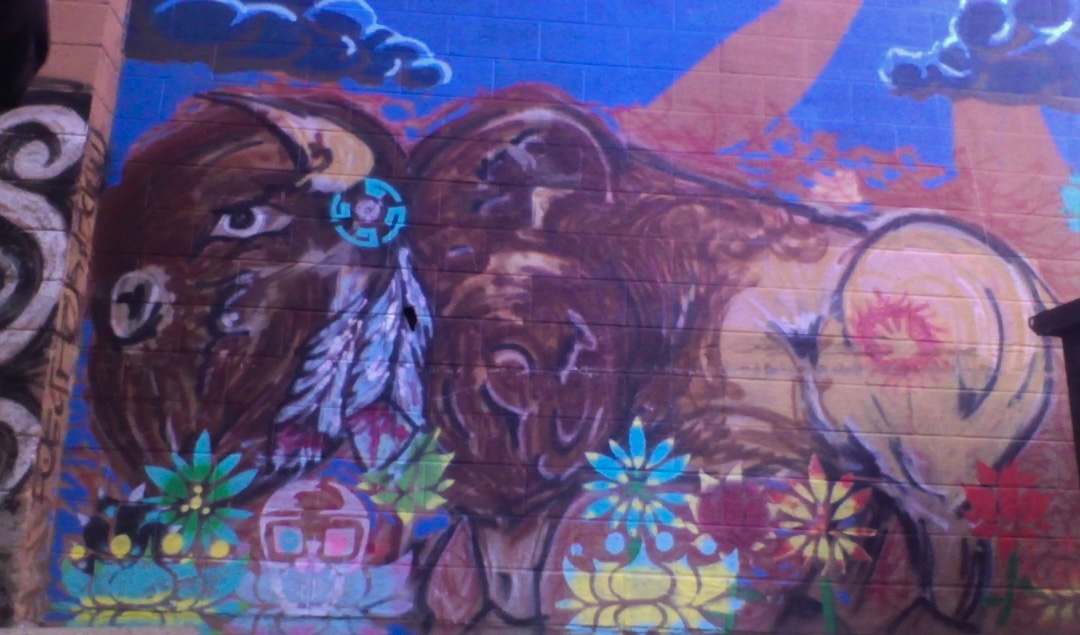Literature Review
Express To Speak: From Theory to Practice
Express To Speak© is a youth engagement program designed to empower participants through creative expression. Based on sound social science theory, the practice model is designed to assist adolescents and transitional-aged youth to reduce maladaptive thinking and instill productive, pro-active thinking. Moreover, program participants learn how to identify and develop their own capacity for resiliency and selfefficacy, often in the face of socially and developmentally challenging environments.
Express To Speak (E2S), developed over a period of many years, engages participants in a process of active creative expression in order for them to better retain the acquired critical thinking and emotional regulation skills.
Theoretical Model
The theoretical models in which E2S is rooted in includes social learning theory, constructivism (informing narrative therapy), and the developing theory of emotional intelligence.
Social learning is a process of learning by which knowledge is acquired through modeling, imitation, and observation of others in their environment. This theory has also been known as a bridge between cognitive and behaviorist theories because it employs motivation, attention and memory. “Most human behavior is learned observationally through modeling: from observing others, one forms an idea of how new behaviors are performed, and on later occasions this coded information serves as a guide for action.” (Bandura)
Constructivism’s philosophical underpinnings posits that the learning is an interactive engagement process. Learning is constructed through active information and experience. This assimilated knowledge builds upon previously known subjective understandings of reality. Knowledge is gained through a process of construction rather than acquiring.
The basis of narrative therapy is social constructionism or the idea that people are constructed through culturally mediated interactions. Narrative therapy is based upon the assumptions that what people experience about themselves and the world around is influenced by individual adopted cultural messages. These message create perceptions about the way one perceives, believes and experiences the world.
Shapiro & Ross (2002)
Narrative therapy practices were developed so individuals could examine
dominant problem story lines, to map, explore and re authoring these stories to better fit a most holistic view of themselves and the world around. Narrative theory emphasizes the importance of language to express both the interpersonal and intrapersonal. The process gives the participant the ability to examine the underlying meaning of cultural maturated beliefs while empowering the participant to to re authoring or reformulate more optimal preferred life direction.
Emotional intelligence is an evolving theory defined as “the ability to perceive emotions, to access and generate so as to assist thought, to understand emotions and emotional knowledge, and to reflectively regulate emotions so as to promote emotional and intellectual growth” Mary and Salovey (1997) Emotional intelligence, Adelheis, Nicol (2002). In this study, the role of emotional Intelligence in Anxiety and Depression among Adolescents found a positive connection between the ability to regulate mood and an individual’s self-esteem. The ability to regulate mood is referred to as (Emotional Repair) as the ability to discriminate between feelings is (Emotional Clarity). It was also found that individuals with a higher degree of Emotional Repair and Clarity have better psychological adjustments, independent of thought suppression and self esteem. Emotional repair is also associated with the ability to control ruminative and or intrusive thoughts associated with stress (Salovey et al., 1995)
In life, emotions are intertwined with significant life stories. The use of Narrative theory and emotional intelligence or Emotionally Focused Theory gives the participant the ability examine personal emotions; both past and present through a narrative lens. Although Emotionally Focused Therapy is typically designed for intimate relationship, the importance of discovering underline emotional patterns appears significant in the participants ability to understand the narrative’s emotional underpinnings (Family Medicine 2002). This also gives the participant the ability to use emotionally focused theory to envision or feel the desired emotional response to a newly authored narrative.
Practice Model
E2S is a strengths-based model which elicits reflection and change to the youth’s internal narrative by engaging participants in the expressive arts. Creative expression is the primary vehicle used to effect change.
Expressive Arts Therapy gives individuals the ability to bypass traditional talk therapy and engage in a subjective process of self discovery, reflection and healing. Expressive arts therapy gives the individual the ability to uniquely process problems and emotions by either movement art, journaling or other express art modalities. The therapy is not focused on the outcome of artistic projects but rather the process and the subjective interpretation of the work being done (Good Therapy 2015).
Poetry Therapy is ”a creative therapy modality that employs poetry and other forms of evocative literature to achieve therapeutic goals and personal growth” (Golden, 2000. 125) Poetry and the use of other writing modalities is a component of expressive art therapy. Engaging participants with both music and poetry; the therapist has the ability to create a common language which strengthens the therapeutic alliance. Group cohesion through a strong therapeutic alliance has been shown to give participants the ability to self disclose and find camaraderie among other participants. (Olson- McBridge, Page 2002) According to Yalom (1975) ”self disclosure is a prerequisite for the formation of meaningful interpersonal relationships in a group setting” (p. 360)
E2S in the Classroom
The E2S classroom experience begins with the facilitator delivering a highimpact, animated spoken word performance. This “expressive vulnerability” immediately engages the participants by demonstrating the E2S creative process. Collectively, the participants then define critical thinking, emotional intelligence/awareness, theory and imagination through rapid fire vocabulary identification which is documented by the facilitator on a whiteboard. Participants are asked a series of questions to engage in collective dialogue and to challenge their perceptions of reality. E2S identifies this brainstorming process as “collective mind mapping”. Next, the facilitator creates an impromptu spoken word piece based on the collective mind map. This process elicits students to create their personal subjective mind map which is the basis for an automatic creative writing exercise. Through journaling, participants imagine new possibilities, process interpersonal conflicts, rewrite negative belief systems or simply express themselves in new ways. The E2S classroom experience concludes with
collective reflection and personal gratitude with a handshake from the facilitator.
References
K.M Golden, The use of collaborative writing to enhance cohesion in poetry therapy groups. Journal of Poetry Therapy 13(3) December 1999
Re authoring the story – appear to pull on some solution focused intervention, for instance the miracle question. “If you were to wake up tomorrow and something changed, what would it be?
Pablo Fernandez-Berrocal, Rocio Alcaide, Natalio Extremera & David Pizarro
(2006)The role of emotional intelligence in anxiety and depression among adolescents. Individual Differences Research, 2006, 4(1) ISSN:1541-745X
James Ikonomopoulos, Robert L. Smith, and Claudia Schmidt (2015) Integrating narrative therapy within rehabilitative programming for incarcerated adolescents. Journal of Counseling and Development, Volume 93
Johanna Shapiro, PDH; Valerie Ross, MS (2002) Application of narrative theory and therapy to the practice of family medicine. Family Medicine 2002
Danielle Charbonneau and Adelheis A.M Nicol 2002 Emotional Intelligence and prosocial behaviors in adolescents psychological Reports, 2002, 90 361-370 Adelheis, Nicol (2002)
Leah Olson – MsBridge & Timothy F. Page, Song to Self: Promoting a therapeutic dialog with high risk youth through poetry and popular music. Social Work With Groups, 35:2,124-137
Irvin D Yalom, The Theory and Practice of Group Psychotherapy





